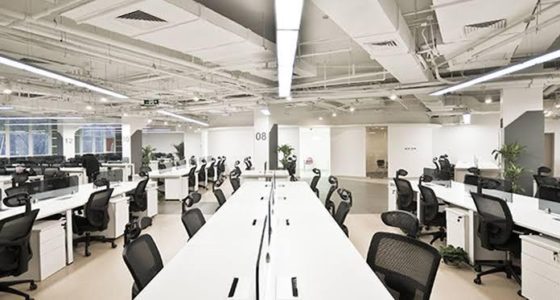A majority of occupiers in India believe that at least half of their office portfolio should be powered by renewable sources by 2030 to align with broader net zero carbon (NZC) goals, according to a recent survey by JLL. Analysis by JLL revealed that 43% of these occupiers are based in Delhi, followed by Mumbai at 27%, Bengaluru and Chennai at 17% and 13% respectively.
Banking and finance sectors are the most likely to demand on-site renewable power sources for green spaces, according to JLL, followed by the construction, manufacturing, and consultancy industries One in three (33%) occupiers believe that on-site renewable energy will become non-negotiable for their organizations by 2030. Furthermore, 87% expect more than half of their energy needs to be met by renewables. Respondents also recognize that there exists a significant demand-supply gap for sustainable buildings, with demand projected to surpass supply.
“Investors and occupiers are increasingly recognizing the importance of prioritizing green energy sources in their office portfolios, emphasizing the need for a well-crafted and thoughtful renewable energy strategy. The real estate sector has a tremendous opportunity to become a key player in the electricity infrastructure and shape the future of renewable energy, thereby advancing our aspirations for a greener and more sustainable future. In India, a majority of corporations are actively seeking to power most of their portfolio with renewables in the coming years, a significant move towards achieving Net Zero Carbon goals. The Asia Pacific (APAC) region, particularly countries like Australia, China, Vietnam, and India, is at the forefront of this transition towards sustainable energy. In fact, these countries have collectively contributed to around 60% of the global increase in renewable energy capacity in recent years. This remarkable statistic underscores their unwavering commitment to sustainable development and their embrace of renewable energy solutions,” said Radha Dhir, CEO and Country Head, India, JLL.
Transitioning to renewable energy is a critical step for the real estate industry to redefine buildings as active contributors through on-site renewable energy generation.
“This trend extends beyond India, with real estate asset owners and occupiers across the Asia Pacific region increasingly demanding renewable energy and on-site renewable power sources. By strategically choosing renewable energy sources and investing in buildings that are ready to actively engage with renewables-powered grids, there is significant scope to reduce long-term energy costs, while achieving sustainability goals within real estate portfolios,” said Kamya Miglani, Head of ESG Research, Asia Pacific, JLL.
For investors and occupiers seeking to increase the use of green energy in office portfolios, a range of well-planned strategies and considerations are necessary. The JLL survey reveals that a combination of on-site generation, such as solar PV installations, and/or off-site renewable energy procurement through Renewable Energy Certificates (REC) and Power Purchase Agreements (PPA), could be the solution according to corporate real estate leaders. It is recommended to assess sites for their feasibility for solar PV installation and local grid connections, as well as the potential for energy sharing with other buildings within the portfolio. Engaging with a real estate advisor can facilitate the evaluation of feasible options, whether it be simple roof leasing with tenant system investment, third-party financed solar PPAs, or landlord capital investment, all in line with broader net-zero carbon goals.
Embracing renewable energy is not only crucial but also viewed as a vital step for the real estate industry’s transformation into active contributors to sustainability. Currently, less than 50% of occupiers in India meet their energy needs with renewable sources, but an impressive six out of ten aim to increase that to 90% by 2030. Collaboration between landlords and occupiers will play a pivotal role in meeting the growing demand for sustainable buildings.









